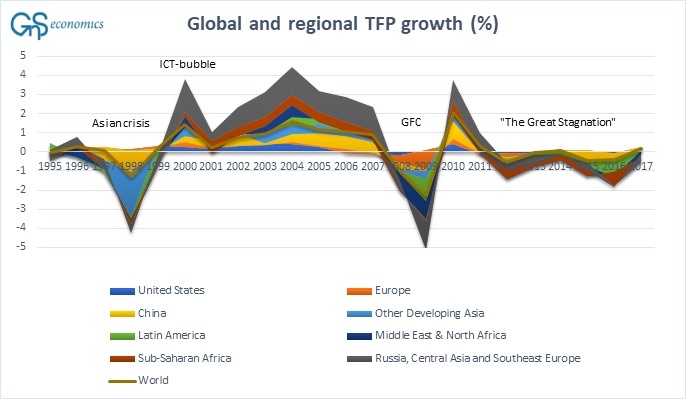The failing engines of global growth
The global slowdown has been much discussed lately. A slowdown in Europe and China was considered to be the main reason for the December stock market rout combined with the balance sheet normalization (QT) program of the Federal Reserve. What is behind the slowdown?
No satisfactory answer has emerged, though China’s efforts to curb excessive lending are a natural candidate, in addition to the fact that central banks have been removing stimulus. The answer, however, goes deeper into the structure of modern economies.
We will show in the March issue of our Q-review that the world economy never actually recovered from the financial crisis, and explain the reasons why. The failure of the economic drivers of global growth, China, the Eurozone and the US, is at the heart of the non-recovery. We will delve into that here.
Killing the spirit
In June 2017, we noticed that something strange was going on in the global economy. The growth of total factor productivity (TFP) had stagnated starting in 2011. This is something that should not happen in a growing economy.
TFP is the measure of that part of GDP growth that changes in the quality and quantity of investments and work force cannot explain. It’s generally thought to be the measure of technological change driving economic growth. If it stagnates, it means that production is not becoming more efficient. That is, the achieved production is just the sum of capital and labor. Stagnation thus implies that our ability to create productive innovations has halted. A serious omen, and yet this is exactly what has happened since 2011. Why?

Figure 1. Regional and global growth rates of total factor productivity (TFP) in percentage points. Source: GnS Economics, Conference Board
…click on the above link to read the rest of the article…